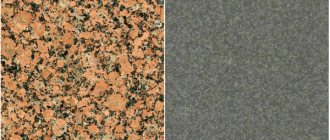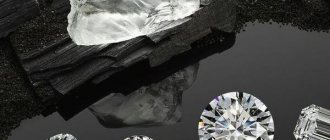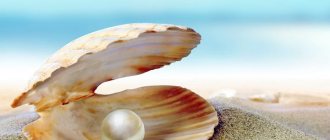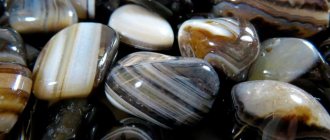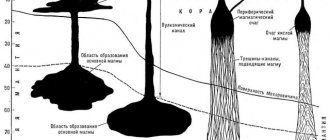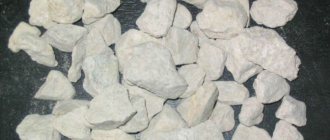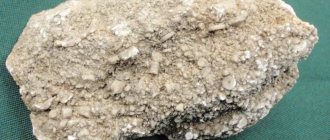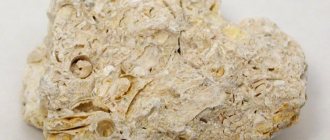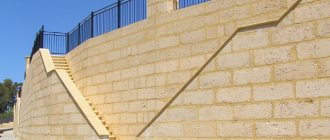The Cretaceous period, which began 145 million years ago, is named after the rock, the main reserves of which were formed during this time. As a witness of bygone eras, natural chalk, the properties, origin and use of which have long been known, is no longer perceived simply as an object familiar from childhood, but as a mineral bearing traces of complex geological transformations.
How is chalk useful for humans?
Chalk contains calcium, which is very useful for our body, because it is the basis of bone structure. In addition, chalk normalizes the iron content in the blood and has a very good effect on tooth enamel, preventing the occurrence of caries.
Interesting materials:
How many steps are there in the All-Russian Physical Culture and Sports Complex GTO? How many steps are there on high Hrothgar? How long did the Young Guard exist? How many Tajiks? How many tanks are in one tank division? How many calves does a cow give birth to? How many tons of fuel are in the tank? How many tons are in a railway tank? How many colors should a child know? How many tourists visited Italy in 2022?
From a chemical point of view, chalk, marble and limestone are the same substance - calcium carbonate, or rather, one of its crystalline modifications - calcite.Chalk
is a soft rock that can be easily ground into powder. Chalk is used as a white pigment in the paint and varnish and rubber industries, in the production of Portland cement, and as a writing material.
Limestone
has greater hardness: it has long been used as a material for stone structures. Most of the churches of Grand Ducal Moscow were built from Myachkovo limestone, which was mined near the village of Myachkovo on the Moscow River and transported to the construction site on special ships. No wonder Moscow was called white stone in the old days. Currently, limestone serves as a valuable material in the production of cement, in metallurgy as a flux (flux in metallurgy refers to substances introduced into the charge to bind impurities, for example P2O5, SiO2, into low-melting slags) and in the chemical industry in the production of soda and bleach , calcium carbide.
Chalk and limestone are sedimentary rocks formed from the remains of the shells of living organisms (primarily ancient protozoa - radiolarians and foraminifera).
Assumption Cathedral on Gorodok. Zvenigorod. Around 1399
White stone carving of the Assumption Cathedral in Gorodok.
Marble
- metamorphic rock formed during the recrystallization under pressure of sedimentary carbonate rocks - mainly limestones. It also consists of calcite (calcium carbonate), however, unlike chalk and limestone, it is a coarse crystalline material: on the cleavage
a piece of marble, its granular structure is clearly visible. Compared to chalk and limestone, marble is hard: it was not for nothing that the ancients built temples from it. Due to various impurities, marble is often colored; marble from some deposits has a beautiful structure in which layers of different colors alternate. Carrara was especially valued
marble, pink
Parian,
yellow Siena
The main temple of the Athenian Acropolis, the famous Parthenon, was built from blocks of
Pentelic
marble, which was mined in the town of Pentelikon, northeast of Athens.
Pentelic marble has a subtle golden hue, which intensifies when you look at the Parthenon in the evening, at sunset. In Italy, a common type of marble is cippolino
, which is the name given to white marble with small yellow or green veins.
But the famous red Verona
marble (rosso di Verona) is actually brown-red limestone, which often contains fossils.
Columns of the Parthenon.
Athens. Mid- 5th century BC e.
What are they made of?
Chalk is a sedimentary rock and consists mainly of the remains of ancient marine protozoa containing calcium carbonate. Over millions of years, parts of the bodies of these organisms accumulated in some places on our planet and eventually formed rich deposits and even entire rock masses. The chalk cliffs of the coast of the North and Baltic Seas, as well as the Pas de Calais Strait in Northern France, Denmark and Southern England are well known. Interestingly, the oldest known name for England - Albion - comes from the ancient Indo-European albho - white. And the basis for this name of the island was precisely the white chalk cliffs located in the narrowest place separating England from mainland Europe.
The difference between lime and chalk is that this term is used to describe a whole group of chemical compounds and mixtures that have in common the presence of calcium. “Basic” lime is calcium oxide (CaO), which is obtained by burning certain sedimentary rocks, primarily chalk and limestone (CaCO 3, or calcium carbonate). Such lime is called quicklime. There are several other types of lime:
- slaked (Ca(OH) 2), which is obtained by reacting quicklime with water;
- chlorine (Ca(Cl)OCl) – colloquially “bleach”, obtained through a chemical reaction in which slaked lime and chlorine are involved;
- sodium hydroxide, which is a mixture of two chemical compounds - sodium hydroxide (NaOH) and slaked lime.
Comparison
The areas of application of chalk and lime (it would be more correct to say lime, since there are several of them) differ quite greatly. We all know student chalk, which is widely used in school, but this is only one of its “specialties”. In addition, it has found application in the production of high-quality coated paper, as well as in the creation of certain types of rubber and in the food industry. Chalk often plays the role of a filler in various compositions - from paint and varnish products to polymers (polypropylene and polyethylene). And, finally, what makes it similar to slaked lime is that both of these materials are suitable for whitewashing tree trunks, borders, fences, and so on.
Different types of lime differ quite greatly, so their areas of application are also far from each other. Quicklime is used in construction and to produce other types of limes. Slaked lime, in addition to whitewashing, is needed in the production of building materials, lime agricultural fertilizers, and leather tanning. In dentistry - for disinfection of the dental canal, and in electrical engineering - as a composition that allows reducing (where necessary) soil resistance when installing grounding. And finally, even in the food industry, slaked lime is known as food additive E 526.
The two main “specialties” of bleach are disinfection and bleaching of fabrics. If she copes with the first perfectly, then in the second case you need to be careful and use only industrially prepared compounds, since with a high concentration of the composition it will simply “eat through” any fabric. And the main “vocation” of soda lime is the absorption of carbon dioxide from the air. This property is indispensable in gas masks and diving equipment. It was even used for a similar purpose in the first spacecraft, but later they switched to more effective formulations.
Calcium carbonate formula in chemistry
Online calculators
Our website contains more than 100 free online calculators for mathematics, geometry and physics.
Directory
Basic formulas, tables and theorems for students. Everything you need to do your homework!
Order a solution
Can't solve the test?! We will help! More than 20,000 authors will complete your work from 100 rubles!
Formula –
Molar mass is g/mol.
Physical properties - white crystals, found in various minerals (calcite - trigonal, aragonite - rhombic).
Practically insoluble in water. Solubility product
It is the main component of limestone, marble, and chalk.
Melts without decomposition under excess pressure of carbon dioxide.
Chemical properties of calcium carbonate
- Does not react with alkalis. Decomposes with acids:
- Reacts with ammonium chloride when heated:
- When excess is transferred into solution, bicarbonate is formed (known only in solution), which determines the temporary hardness of natural waters:
- Reacts with silicon oxide:
- When heated, it decomposes:
Receipt
Calcium carbonate is mined from minerals. Pure, needed for the food or pharmaceutical industries, can be obtained from marble. An alternative production method is based on the calcination process. In this case, we can write down the chemical transformations accompanying it:
Application
In the food industry, calcium carbonate is used as a white food coloring. Since it is part of chalk, it is used for writing. Used for whitewashing ceilings and painting tree trunks. This substance is also used in the production of paints, rubber, household chemicals (toothpaste), and in construction (putties, sealants). It is used as a bleaching agent. It is safe to say that one of the mass consumers of calcium carbonate are plastic manufacturers who use it as a filler and dye. Another area of application is its use in cleaning systems.
Examples of problem solving
[td] Did you like the site?
Tell your friends! www.solverbook.com
Calcium Carbonate structural chemical formula
Structural formula
True, empirical, or gross formula: CCaO3
Chemical composition of calcium carbonate
Symbol Element Atomic weight Number of atoms Percentage of mass
| C | Carbon | 12,011 | 1 | 12% |
| Ca | Calcium | 40,08 | 1 | 40% |
| O | Oxygen | 15,999 | 3 | 48% |
Molecular weight: 100.088
Calcium carbonate (calcium carbonate) is an inorganic chemical compound, a salt of carbonic acid and calcium. The chemical formula is CaCO3. It occurs in nature in the form of minerals - calcite, aragonite and vaterite, is the main component of limestone, marble, chalk, and is part of egg shells. Insoluble in water and ethanol. Registered as white food coloring (E170).
Application
Used as white food coloring E170. Being the basis of chalk, it is used for writing on boards. It is used in everyday life for whitewashing ceilings, painting tree trunks, and for alkalizing the soil in gardening.
Mass production/use
Purified from foreign impurities, calcium carbonate is widely used in the paper and food industries, in the production of plastics, paints, rubber, household chemicals, and in construction. Paper manufacturers use calcium carbonate simultaneously as a bleaching agent, a filler (replacing expensive fibers and dyes), and a deoxidizing agent. Manufacturers of glassware, bottles, and fiberglass use calcium carbonate in huge quantities as a source of calcium - one of the main elements necessary for glass production. Widely used in the production of personal care products (such as toothpaste) and in the medical industry. In the food industry, it is often used as an anti-caking agent and separating agent in dry milk products. If consumed in excess of the recommended dose (1.5 g per day), it may cause milk-alkali syndrome (Burnett's syndrome). Recommended for diseases of bone tissue. Plastic manufacturers are one of the main consumers of calcium carbonate (more than 50% of all consumption). Used as a filler and dye, calcium carbonate is necessary in the production of polyvinyl chloride (PVC), polyester fibers (crimplene, lavsan, etc.), polyolefins. Products made from these types of plastics are widespread - pipes, plumbing fixtures, tiles, tiles, linoleum, carpets, etc. Calcium carbonate makes up about 20% of the coloring pigment used in the production of paints.
Construction
Construction is another major consumer of calcium carbonate. Putties, various sealants - they all contain calcium carbonate in significant quantities. Also, calcium carbonate is the most important component in the production of household chemicals - plumbing cleaners, shoe polishes. Calcium carbonate is also widely used in purification systems as a means of combating environmental pollution; with the help of calcium carbonate, the acid-base balance of the soil is restored.
Being in nature
Calcium carbonate is found in minerals in the form of polymorphs:
- Aragonite
- Calcite
- Vaterite (or μ-CaCO3)
The trigonal crystal structure of calcite is the most common. Calcium carbonate minerals are found in the following rocks:
- Chalk
- Limestone
- Marble
- Travertine
Geology
Calcium carbonate is a common mineral. In nature, there are three polymorphs (minerals with the same chemical composition, but with different crystal structures): calcite, aragonite and vaterite (vaterite). Some rocks (limestone, chalk, marble, travertine and other calcareous tuffs) consist almost entirely of calcium carbonate with some impurities. Calcite is a stable polymorph of calcium carbonate and is found in a wide variety of geological environments: sedimentary, metamorphic and igneous rocks. About 10% of all sedimentary rocks are limestones, composed predominantly of calcite remains of shells of marine organisms. Aragonite is the second most stable polymorph of CaCO3 and is mainly formed in the shells of mollusks and the skeletons of some other organisms. Aragonite can also form in inorganic processes, such as in karst caves or hydrothermal vents. Vaterite is the least stable variety of this carbonate, and very quickly turns into either calcite or aragonite in water. It is relatively rare in nature when its crystal structure is stabilized by certain impurities.
Manufacturing
The vast majority of calcium carbonate extracted from minerals is used industrially. Pure calcium carbonate (for example, for food production or pharmaceutical use) can be made from a pure source (usually marble). Alternatively, calcium carbonate can be prepared by calcination of calcium oxide. Water is added to this oxide, yielding calcium hydroxide, and carbon dioxide is then passed through this solution to precipitate the desired calcium carbonate: CaO + h3O → Ca(OH)2 Ca(OH)2 + CO2 → CaCO3 + h3O
Chemical properties
When heated to 900−1000 °C, it splits into an acidic oxide - carbon dioxide CO2 and an oxide - quicklime CaO according to the equation: CaCO3 → CaO + CO2. It dissolves in water with carbon dioxide, forming an acidic salt - calcium bicarbonate Ca(HCO3)2: CaCO3 + CO2 + h3O → Ca(HCO3)2. The existence of precisely this reaction makes it possible to form stalactites, stalagmites and other beautiful forms, and indeed to develop karst in general. At 1500 °C, together with carbon, it forms calcium carbide and carbon monoxide (II) CaCO3 + 4C → CaC2 + 3CO.
formula-info.ru
Compound
The composition of chalk deposits includes:
- Skeletal fragments
– approximately 10%. These are the remains of not only protozoa, but also large multicellular animals. - Shells of ancient mollusks
– 10%. Among them were animals with limestone shells - foraminifera. - Particles of limescale algae growth
– no more than 40%. Most of the limestone deposits, contrary to popular belief, were formed from the remains of the simplest plants - coccolithophores, and not thanks to the shells of foraminifers. Coccolithophores have not become extinct; they thrive in the vast oceans today, taking part in the exchange of carbon between the ocean and the atmosphere. - Crushed crystalline calcite
– no more than 50%. These are natural mineral formations of complex origin. - Insoluble silicates
– up to 3%. These are minerals of geological origin - sand, rock fragments carried into chalk deposits by wind and water. Properties of chalk
Humidity has a great influence on the properties of chalk, affecting its strength and ductility. An increase in humidity leads to deformation, while in a dry environment chalk can crumble even from slight pressure.
Rock saturated with moisture sticks to construction tools. That is why construction work using calcium carbonate is carried out in countries with hot and arid climates. An excellent example of an ancient limestone structure is the Egyptian pyramid of Cheops (Khufu).
At sub-zero temperatures, the rock tends to disintegrate into fragments of several millimeters.
Table
Now we can give a clear answer to the question of what is the difference between lime and chalk. The table below summarizes what these materials have in common and how they differ.
| Lime | Chalk | |
| What is | A group of chemical compounds and mixtures containing calcium. Comprises:
| Sedimentary rock formed from the remains of ancient simple organisms |
| Application area |
| Production of coated paper, as student chalk at school, as a cheap filler in the production of polymers and varnishes, as well as in the food industry and for whitewashing trees, borders, etc. |
